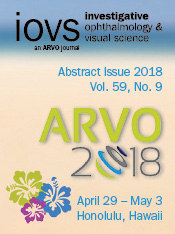Initial Quality Control Assessment of Optical Coherence Tomography Angiography Data in the EyeDOC Study
Brandon J. Lujan, Alexander Tomlinson, Bilal Hasan, James Carroll, Guo Xinxing, Xiangrong Kong,
Laura R. Erker, Yali Jia, David Huang, David J. Wilson, Pradeep Y. Ramulu, and Alison Abraham
Purpose: Optical Coherence Tomography Angiography (OCTA) non-invasively images and quantifies retinal blood flow. However, the benefits of OCTA depend upon the acquisition of high-quality images. Here we report on the initial quality assessment of OCTA data in a population-based aging cohort and the impact of on-sight training on image quality.
Methods: The Eye Determinants of Cognition (EyeDOC) study is an observational sub-study of the Atherosclerosis Risk in Communities Study, which aims to recruit 1000 subjects for eye examinations and retinal imaging. Subjects enrolled in EyeDOC with visual acuity ≥ 20/200 were imaged using OCTA. A single photographer from each of two clinical sites, Jackson (J) and Washington County (W), were certified in Optovue AngioVue OCTA acquisition and given a protocol detailing common artifacts and signal scan intensity (SSI) requirements. Macular (3mm and 6mm) and optic nerve (4.5mm) OCTA was acquired at one sitting. Data was uploaded to the Casey Reading Center (CRC) where quality control (QC) was performed using the following criteria: SSI above 55 and absence of significant image artifacts. Following an initial recruitment wave, both sites had on-site trainings from the manufacturer to improve image capture.
Results: Sites J and W, acquired all scan types in 133 and 74 eyes, respectively, where the mean age was 79 years (range 73-91) and mean distance logMAR was 0.12. The total QC pass rate of all scans was 54.1%, with the average at J being 58.3% and at W being 43.0% (p=0.004 Chi-square test). The average pass rate of all scan types by visual acuity (VA) were: Better than 20/25 (68.3%), 20/25-20/40 (38.7%), and worse than 20/40 (30.3%). Reasons for failure of any scan type at each site (J, W) included low SSI (55%, 78%), excess motion (35%, 10%), defocus artifact (4%, 4%), and other artifacts (7%, 8%). Additional training by the manufacturer increased the rate of scans passing at J and W, respectively, by 6.8% and 10.1% (p=0.0006).
Conclusions: High-quality OCTA images reveal quantitative vascular details not otherwise obtainable, however subject and photographer factors may limit how many scans can be confidently analyzed. Higher QC passing rates were achieved with better subject VA, increased technician OCTA acquisition experience, and additional on-site training. This quality assessment will help guide the effective use of OCTA in multicenter clinical trials.
This is an abstract that was submitted for the 2018 ARVO Annual Meeting, held in Honolulu, Hawaii, April 29 - May 3, 2018.
https://iovs.arvojournals.org/article.aspx?articleid=2690866
